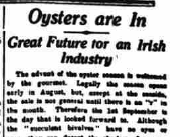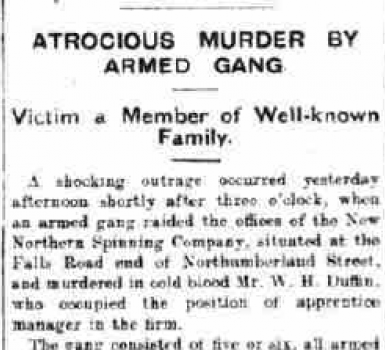The Irish Oyster Industry
02 September 1921

Freeman’s Journal, 2 September 1921
The consumption of oysters in Ireland has been a tradition for over 4,000 years and their cultivation dates back to the 13th century. In September 1921, the Freeman’s Journal reported on the beginning of the Irish oyster season, claiming that though there was a plentiful supply the industry was less well developed than in other counties such as the USA, France and the Netherlands.
Oysters are In. Great Future for an Irish Industry
The advent of the oyster season is welcomed by the gourmet. Legally the season opens early in August, but, except at the seaside, the sale is not general until there is an “r” in the month. Therefore the 1st September is the day that is looked forward to. Although the “succulent bivalves” have no eyes or ears they can detect the shadow of an approaching boat. The oyster has a heart and kidneys, and is in other respects also a well-developed living organism. “I suppose,” says Professor Huxley, “that when the sapid said slippery morsel—which is and is gone like a flash of gustatory summer lightning—glides along the palate, few people imagine that they are swallowing a piece of machinery (and going machinery too) greatly more complicated than a watch”—in fact, a living organism of a high order.
Discoveries in caves and in the earth when excavations are made prove that the oyster became a very unfit item in the menu of prehistoric man in these islands. To epicurean Roman palates the oyster was precious, and through the ages it has maintained a wide popularity…
THE IRISH OYSTER
The American oyster industry is the greatest of its kind in the world, and millions of capital are sunk in it. France and Holland also cultivate the oyster on a large scale, while the names of the principal British and Irish oyster beds are famous. Ireland, with its splendid Atlantic seaboard, possesses culture-grounds second to none in the world. The output of some of the banks on our eastern seaboard, and particularly that of Carlingford Lough, is highly prized by all who are capable of appreciating the points of the thoroughbred “native.” If only sufficient attention were paid to it, there would assuredly be a great future for the Irish oyster industry.














